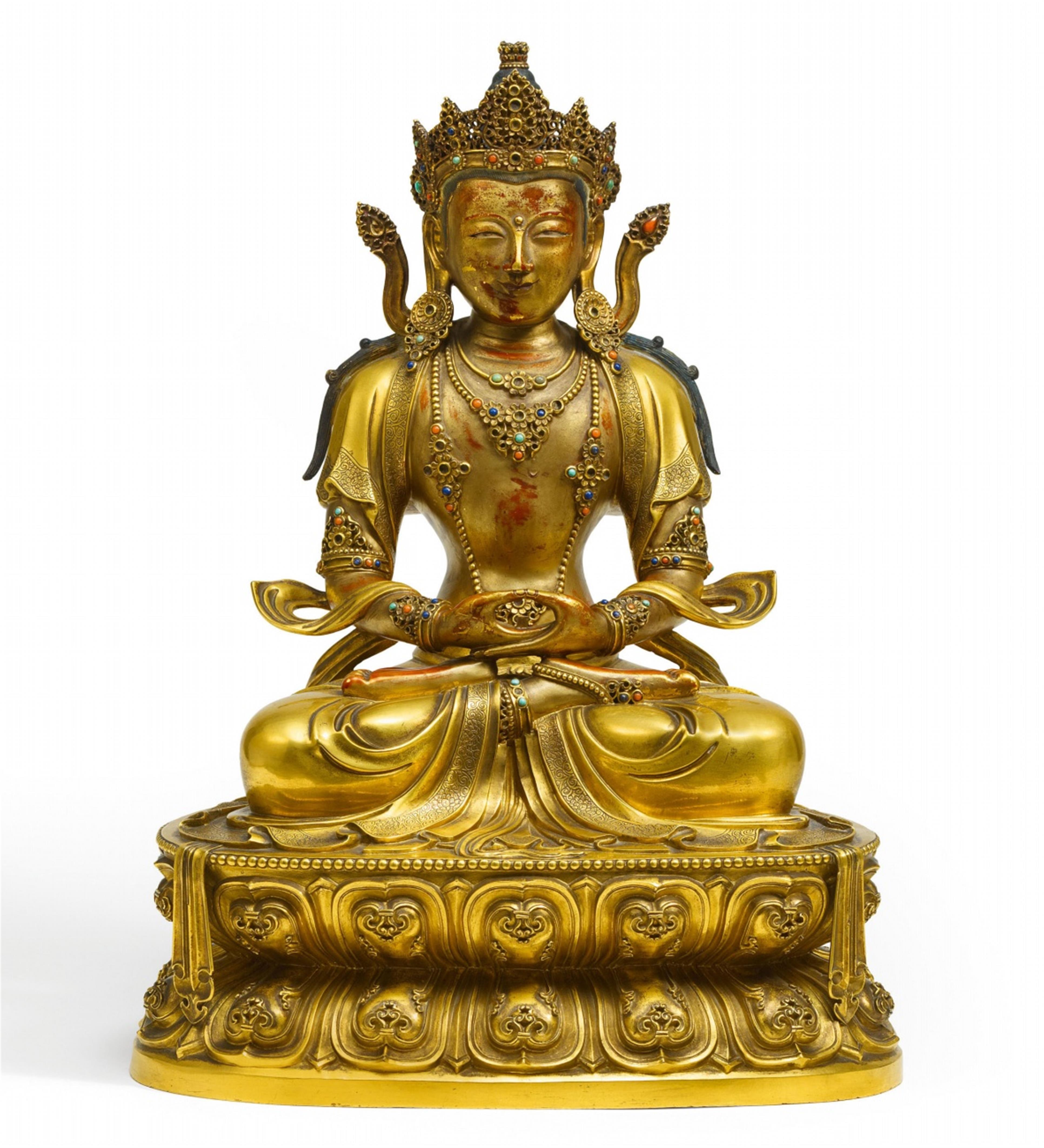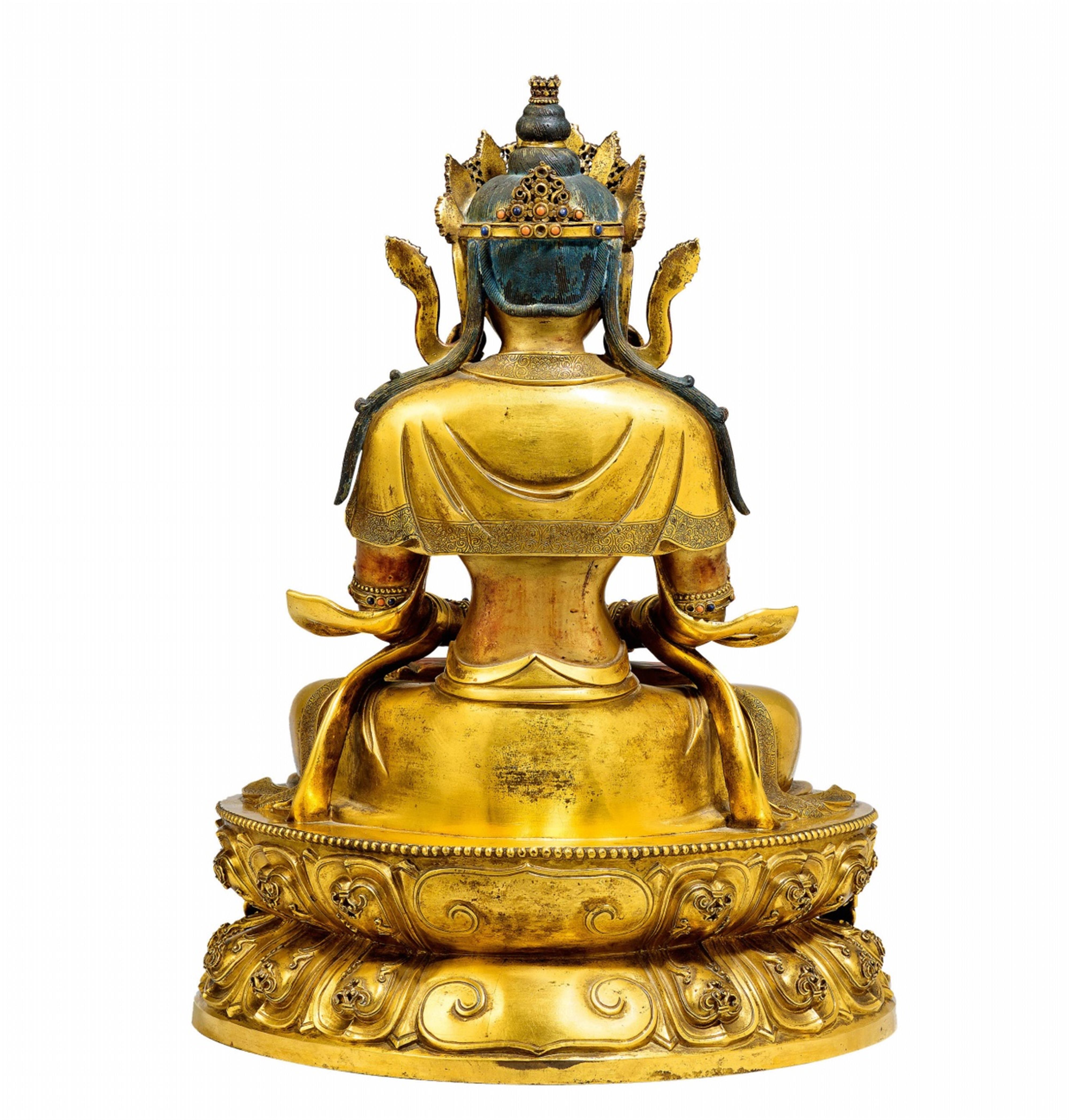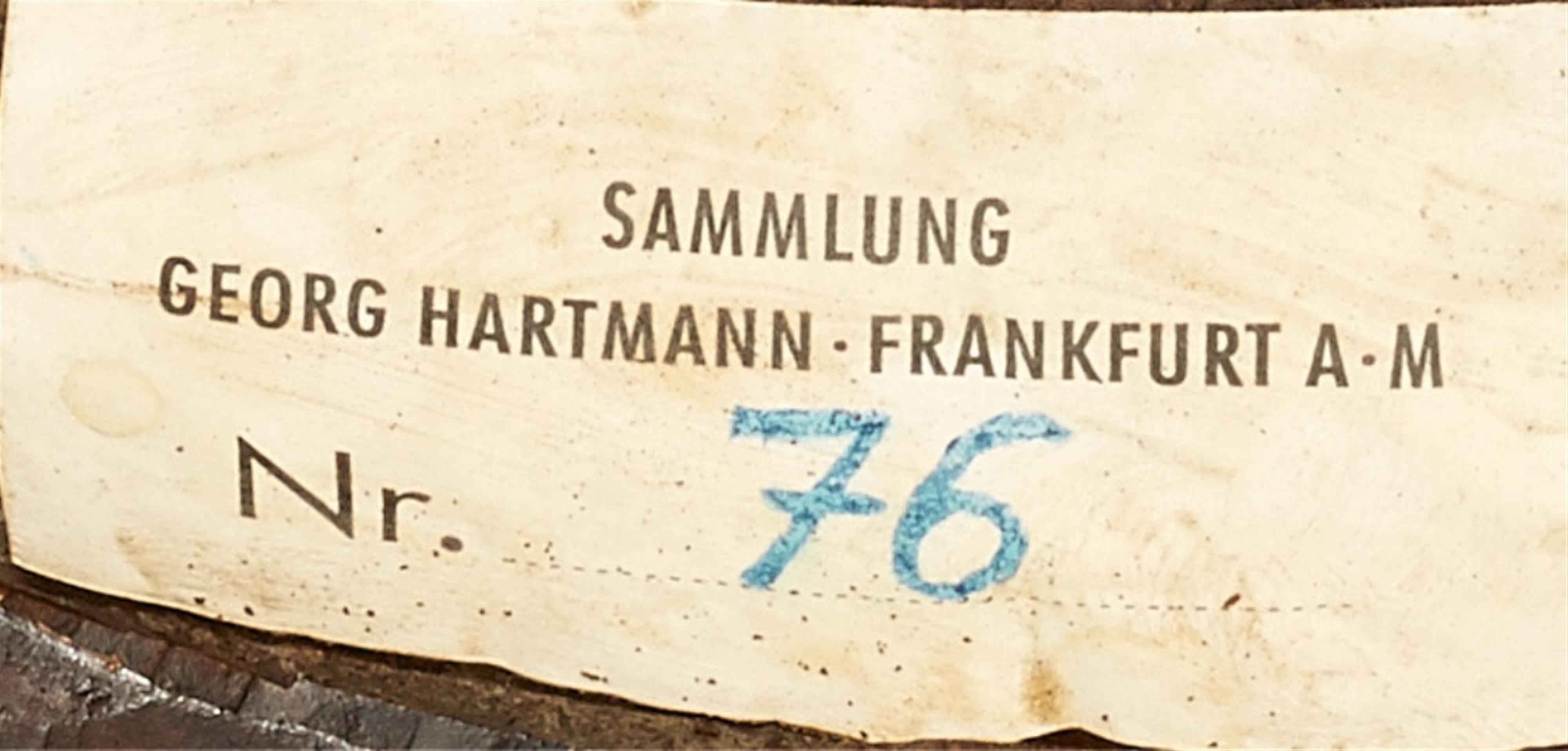An Imperial gilt-bronze and gilded lacquer figure of Amitayus. Kangxi period. Around 1680/1700
An Imperial gilt-bronze and gilded lacquer figure of Amitayus seated in dhyanasana on a high double-lotus base, hands held in dhyana mudra, the borders of the shawl and dhoti incised with lotus and scrolls, the scarf billowing elegantly around shoulders and arms. The figure is richly adorned with jewellery and a five-point diadem, all inlaid with turquoise, lapis lazuli and coral. The body parts with a cold gilt over thin red lacquer coating, blue pigments to the hair. To the base the incised number sishier (42).
Height 43.5 cm
The worship of the Dhyani Buddha Amitayus (chin. Wuliangshou), the Buddha of Infinite Life, was believed to ensure long life and the rebirth in the Western Paradise. He therefore was the most popular Buddha in the Imperial family, who were ardent followers of Tibetan Buddhism. The devotional purpose of this figure is not just evidenced by the blue hair colour and the cold-gilt body parts, but also by the sacred offerings of holy scriptures stuffed into the inside of these figures.
The Qing Emperors repeatedly had Buddhist figures made in groups of varying numbers to be presented to family members as gifts for their birthdays. We know that in the year 1686 Emperor Kangxi presented his grandmother empress Xiaozhuang a four-armed Avalokiteshvara, today in the Palace Museum in Beijing (Buddhist Statues of Tibet. The Complete Collections of Treasures of the Palace Museum (Vol. 60), 2003, pl. 226 and 237). This figure is probably one of the earliest examples manufactured in the Qing Imperial metal workshops. It is on this figure that the dating of the Amitayus is based.
The present figure belongs to a large group of identical pieces, of which more then thirty are known. Ulrich von Schroeder comments on the great similarity of these sculptures and suggests that the same casting moulds were used, variations being the inset semi-precious stones and the jewel on top of the chignon (Ulrich von Schroeder, Indo-Tibetan Bronzes, Hong Kong 1981, p. 152, nos. 152A und 152B). On the base of the figures we find an incised number, the highest possibly being 74. Thus this large production antedates the sets of nine and up to ten thousand Buddhist sculptures commissioned by Emperor Qianlong as gifts to his mother since 1750.
The Kangxi-period figures of Amitayus were most probably looted from a Lamaist temple in the Forbidden City during the boxer rebellion of 1900/1 and quickly came onto the Chinese art market. Two such Amitayus can be traced back to the early 1900s when they were collected by Germans then living in China. The Amitayus in Staatlichen Galerie Moritzburg, Halle (W. Bräutigam, Schätze Chinas in Museen der DDR, Leipzig 1989, no. 283) came into the Museum after large properties (land and estates) were confiscated in Soviet-ruled East-Germany in the years 1945 to 1949. Besides the many figures sold at auction internationally in the past decades, many of the Amitayus figures have also been sold in Germany (Neumeister, München, 23./24.6.1999; Lempertz, Köln, 2.6.2000, lot 247; Lempertz, Köln, 31.5./1.6.2005, lot 109; Nagel, Stuttgart, 8.5.2014, lot 88).
The wedding photo documents the piece as being in the private collection of Georg Hartmann (1870-1954) before 1920. Hartmann was a famous type founder and senior-director of the Bauersche Gießerei in Frankfurt. He is also well-known for his collection of medieval wooden sculptures, impressionist and modern paintings.
Provenance
Georg Hartmann (1870-1954). Inside the figure the collector’s printed paper label reading Sammlung Georg Hartman, Frankfurt A M Nr. 76 (the number added in ink by hand)






